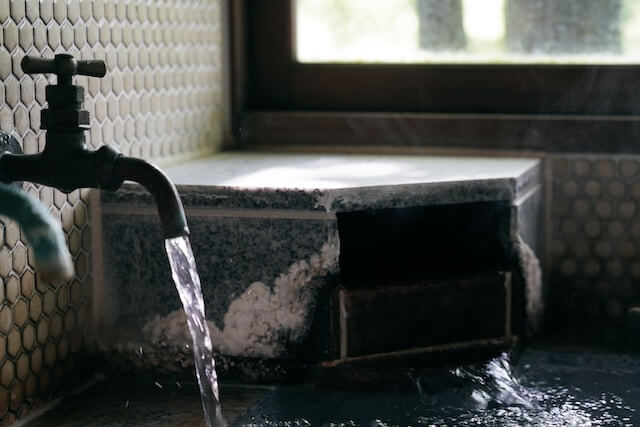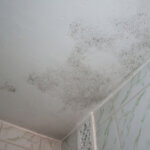Water damage wreaks havoc on properties, causing structural deterioration and financial distress. To minimize the aftermath of such disasters, you need to act quickly.
At Jolly Cleaning and Restoration, we understand the significance of accurate water damage assessment in mitigating destruction and expenses. Serving the Northern Kentucky and Cincinnati area, our mission is to provide homeowners with precise evaluations and effective restorations.
Understanding Water Damage Assessment
A water damage assessment is the systematic evaluation of water-induced harm in a property. This assessment involves a thorough inspection to determine the severity of water damage by identifying visible and hidden issues. Moreover, water damage assessments help estimate restoration costs, guide restoration efforts, and provide essential documentation for insurance claims.
At Jolly Cleaning and Restoration, our approach integrates cutting-edge techniques with seasoned expertise to ensure a comprehensive evaluation.
Key Components of a Water Damage Assessment
Our assessment of water damage comprises several crucial steps, such as:
- Inspecting the Area: We begin the process by looking for dampness, stains, discoloration, and structural weakening in walls, floors, ceilings, and other affected areas.
- Identifying the Source: Then, we determine the source of the water intrusion. Whether it’s from a burst pipe, roof leak, flooding, or other causes, locating and addressing the source helps prevent further damage.
- Categorizing the Water Damage: Based on the damage, we categorize the situation into three classes. Class 1 involves minimal water absorption, while Class 3 indicates the highest level of saturation and absorption, potentially involving contaminated water.
- Documenting and Recording: Next, we take photographs, make notes, and create a comprehensive report outlining the affected areas, the extent of damage, and our recommended restoration plan.
- Developing a Restoration Plan: Based on the assessment findings, we formulate a tailored restoration plan. This plan outlines the steps needed to mitigate the damage, including drying techniques, repairs, disinfection, and restoration of affected areas.
Effective Methods To Test for Water Damage
When detecting water damage, we make sure to employ various techniques, like:
- Moisture Meters: These devices measure moisture levels in various materials like wood, drywall, and other building materials. They provide immediate readings, indicating the presence and extent of moisture, helping our technicians pinpoint affected areas.
- Thermal Imaging Cameras: These cameras detect temperature variations and moisture levels by capturing infrared images. They identify temperature differences caused by moisture, enabling technicians to locate hidden water pockets behind walls or ceilings.
- Hygrometers: Hygrometers measure humidity levels in the air. High humidity can indicate moisture issues, aiding in identifying areas prone to mold growth or ongoing water damage.
- Probing and Sensing Tools: Our technicians may use specialized probes or sensors to penetrate surfaces and detect moisture content in hard-to-reach areas. These tools help in identifying concealed water damage without causing extensive damage to the property.
- Visual Inspection: A thorough visual examination remains one of the most basic yet crucial methods to detect water damage.
From moisture meters to visual inspections, our arsenal includes advanced tools that uncover hidden damage, ensuring no affected area goes unnoticed.
Identifying Hidden Water Damage
Before enlisting our professional services, however, you can conduct your own investigation to identify potential water damage. Here are some things to look for:
- Musty Odors: Unpleasant, musty smells, especially in closed or confined spaces, could indicate hidden mold growth caused by moisture buildup. Investigate the source of the odor to determine if there’s an underlying water issue.
- Discoloration or Stains: Look for discoloration or water stains on walls, ceilings, or floors. Even small, seemingly insignificant spots could indicate water seepage or leaks that need attention.
- Peeling or Bubbling Paint/Wallpaper: Moisture trapped behind walls can cause paint or wallpaper to peel, bubble, or crack. Check for any unusual changes in the appearance of painted surfaces or wallpapers.
- Warping or Buckling of Flooring: Wooden floors that warp, laminate flooring that buckles, or tiles that become loose might indicate water damage underneath. Pay attention to changes in the floor’s surface texture or alignment.
- Sagging Ceilings or Walls: Water-damaged ceilings or walls might sag or show signs of deformation due to prolonged exposure to moisture. Inspect these areas closely for any structural irregularities.
- Increased Utility Bills: Additionally, a sudden unexplained rise in water bills could signify a hidden leak. Monitor your utility bills regularly to spot any unexpected spikes that might indicate water loss.
- Deterioration of Materials: Water damage can cause materials like wood, drywall, or plaster to deteriorate. As such, be sure to check for any softening, crumbling, or weakening of these materials, which could indicate water infiltration.
- Visible Mold Growth: While mold can sometimes be apparent, it can also grow in hidden or less accessible areas. For this reason, you must inspect areas prone to moisture accumulation, such as basements, attics, or behind appliances, for signs of mold growth.
- Pest Infestation: Insects or pests such as termites and cockroaches are attracted to damp or moist areas. If you notice increased pest activity in certain areas of your property, it might signal water-related issues.
If you suspect water damage but are uncertain, consulting with a professional restoration service like Jolly Cleaning and Restoration can provide expert assessment and guidance.
Evaluating the Severity of Water Damage
Now that we have established that there is indeed water damage to your property, the next step is to determine how extreme the damage is so we can devise an effective restoration plan.
In doing so, we need to consider the following factors:
- Source and Type of Water: The origin and category of water intrusion significantly impact the severity of damage. Clean water from a broken supply line poses fewer health risks than contaminated water from sewage backups or floods, which can harbor harmful bacteria and pathogens, resulting in more severe damage and health hazards.
- Duration of Exposure: The length of time that materials or structures are exposed to water plays another crucial role. Prolonged exposure exacerbates damage, weakening building materials, promoting mold growth, and increasing the likelihood of irreparable harm to belongings and infrastructure.
- Affected Materials and Property Components: Different materials react differently to water damage. Porous materials like wood, insulation, and fabrics are more susceptible to water absorption, swelling, and decay than non-porous materials like metal or tile.
- Environmental Conditions: Humidity levels, temperature variations, and ventilation impact the drying process and the potential for secondary damage. High humidity levels hinder drying, fostering mold growth and prolonging the restoration process.
- Pre-Existing Conditions: Pre-existing issues, such as poor ventilation, previous water damage, or structural weaknesses, can exacerbate the effects of new water intrusion, leading to more severe damage and complicating restoration efforts.
When Is Water Damage Considered Serious?
We will consider your water damage serious if there is flooding or prolonged exposure. These instances can pose significant risks to your property and health. Take immediate action and contact our team at Jolly Cleaning and Restoration.
Crafting an Accurate Water Damage Estimate
Because restoration work can be expensive, getting an accurate estimate is a must. These estimates offer a comprehensive plan that outlines tasks, costs, and materials required for the restoration process, which provides clarity regarding the scope of work and other associated expenses.
Jolly Cleaning and Restoration’s Approach to Estimates
Our company prides itself on transparent and detailed estimates. We provide comprehensive breakdowns of costs and services, aiding clients in understanding the restoration process. For further guidance, we offer tips for filing successful water damage insurance claims.
Conclusion
An accurate water damage assessment is pivotal in mitigating the destructive aftermath of water-related disasters. At Jolly Cleaning and Restoration, we are committed to delivering comprehensive services to ensure effective restoration and cost management.
Contact us to safeguard your property and restore peace of mind amidst water-related challenges.




